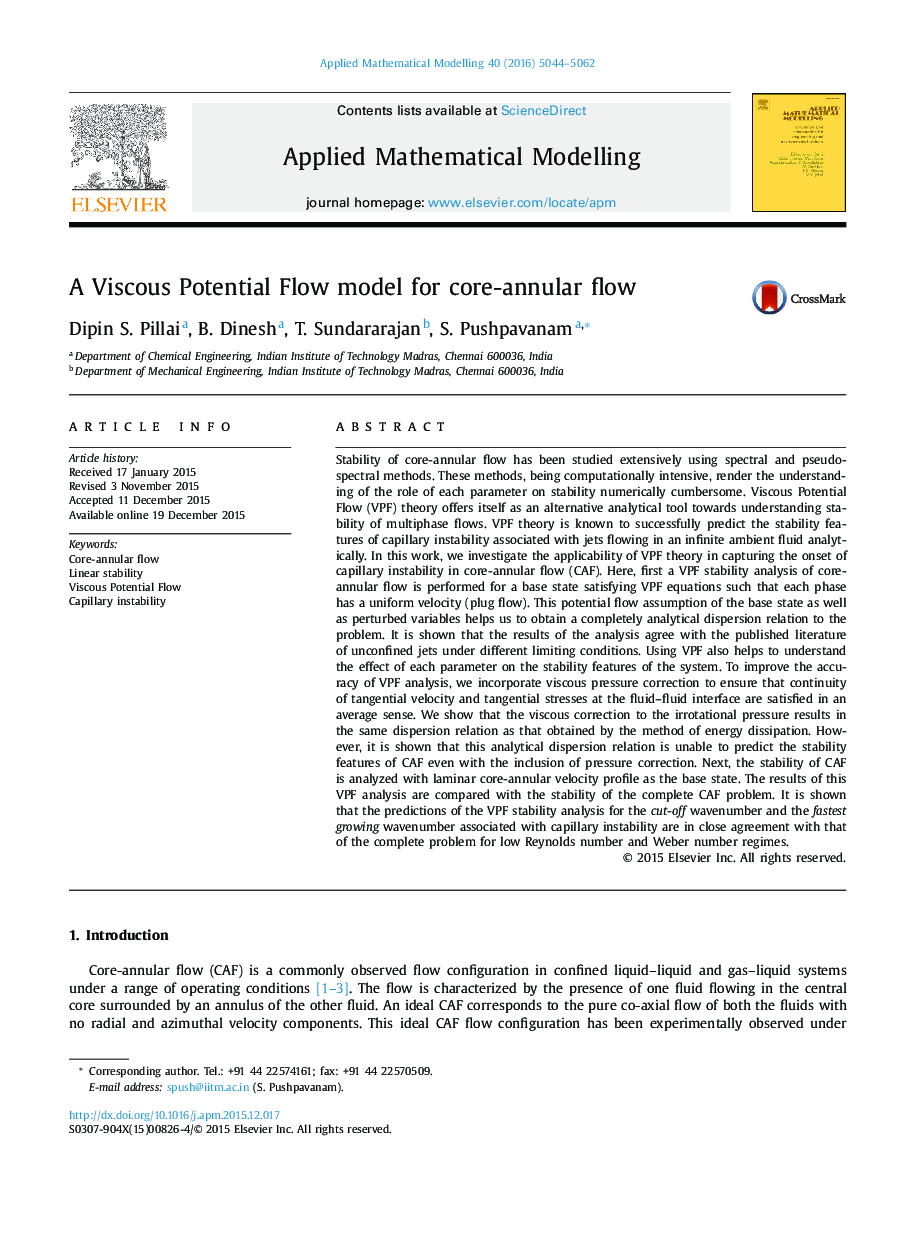| کد مقاله | کد نشریه | سال انتشار | مقاله انگلیسی | نسخه تمام متن |
|---|---|---|---|---|
| 1703139 | 1519401 | 2016 | 19 صفحه PDF | دانلود رایگان |
• Viscous Potential Flow (VPF) is used to study stability of core-annular flow (CAF).
• VPF analysis with uniform and laminar base states are investigated.
• Completely analytical dispersion relation is obtained with uniform base profile.
• Laminar VPF accurately predicts stability of CAF at low Weber and Reynolds numbers.
Stability of core-annular flow has been studied extensively using spectral and pseudo-spectral methods. These methods, being computationally intensive, render the understanding of the role of each parameter on stability numerically cumbersome. Viscous Potential Flow (VPF) theory offers itself as an alternative analytical tool towards understanding stability of multiphase flows. VPF theory is known to successfully predict the stability features of capillary instability associated with jets flowing in an infinite ambient fluid analytically. In this work, we investigate the applicability of VPF theory in capturing the onset of capillary instability in core-annular flow (CAF). Here, first a VPF stability analysis of core-annular flow is performed for a base state satisfying VPF equations such that each phase has a uniform velocity (plug flow). This potential flow assumption of the base state as well as perturbed variables helps us to obtain a completely analytical dispersion relation to the problem. It is shown that the results of the analysis agree with the published literature of unconfined jets under different limiting conditions. Using VPF also helps to understand the effect of each parameter on the stability features of the system. To improve the accuracy of VPF analysis, we incorporate viscous pressure correction to ensure that continuity of tangential velocity and tangential stresses at the fluid–fluid interface are satisfied in an average sense. We show that the viscous correction to the irrotational pressure results in the same dispersion relation as that obtained by the method of energy dissipation. However, it is shown that this analytical dispersion relation is unable to predict the stability features of CAF even with the inclusion of pressure correction. Next, the stability of CAF is analyzed with laminar core-annular velocity profile as the base state. The results of this VPF analysis are compared with the stability of the complete CAF problem. It is shown that the predictions of the VPF stability analysis for the cut-off wavenumber and the fastest growing wavenumber associated with capillary instability are in close agreement with that of the complete problem for low Reynolds number and Weber number regimes.
Journal: Applied Mathematical Modelling - Volume 40, Issues 7–8, April 2016, Pages 5044–5062
